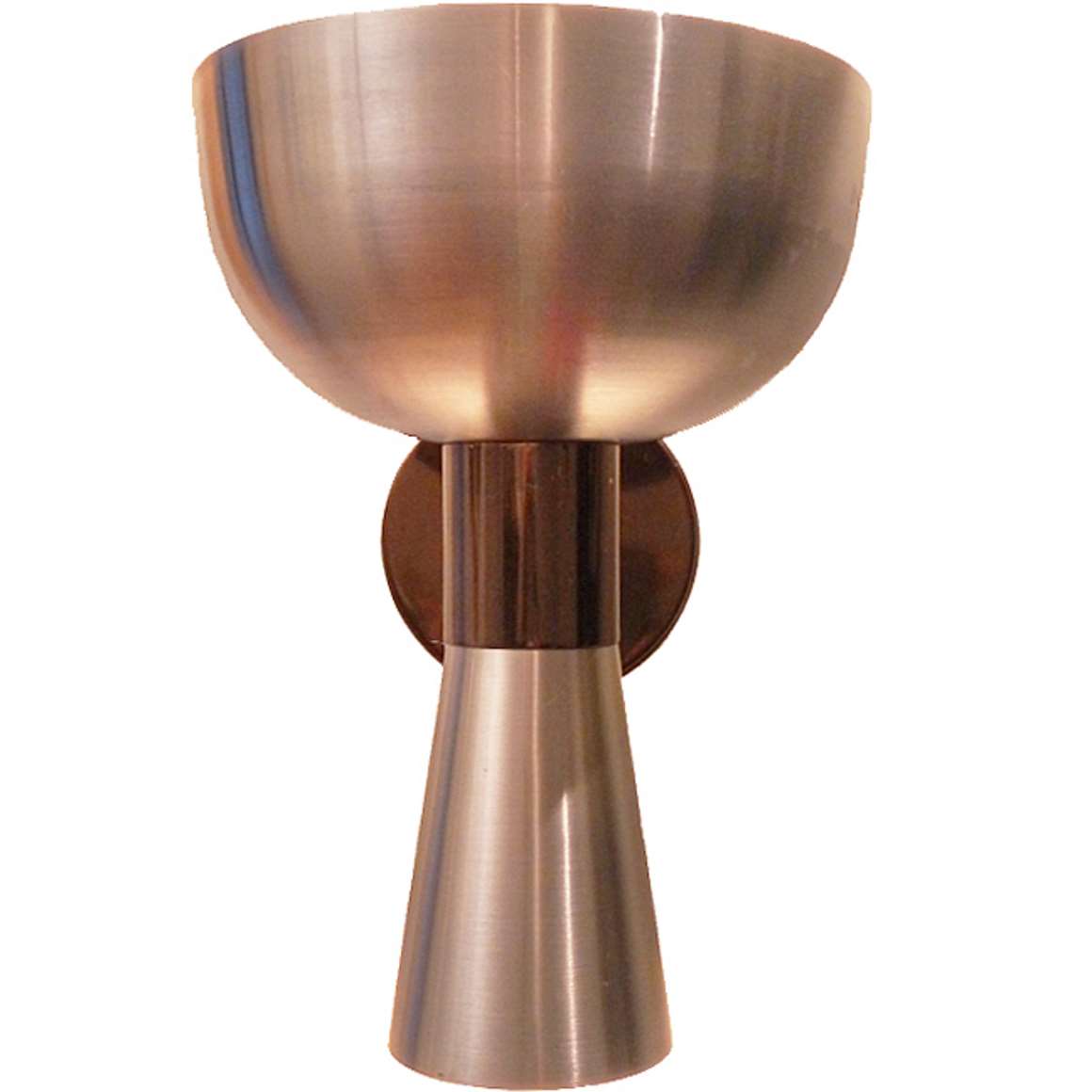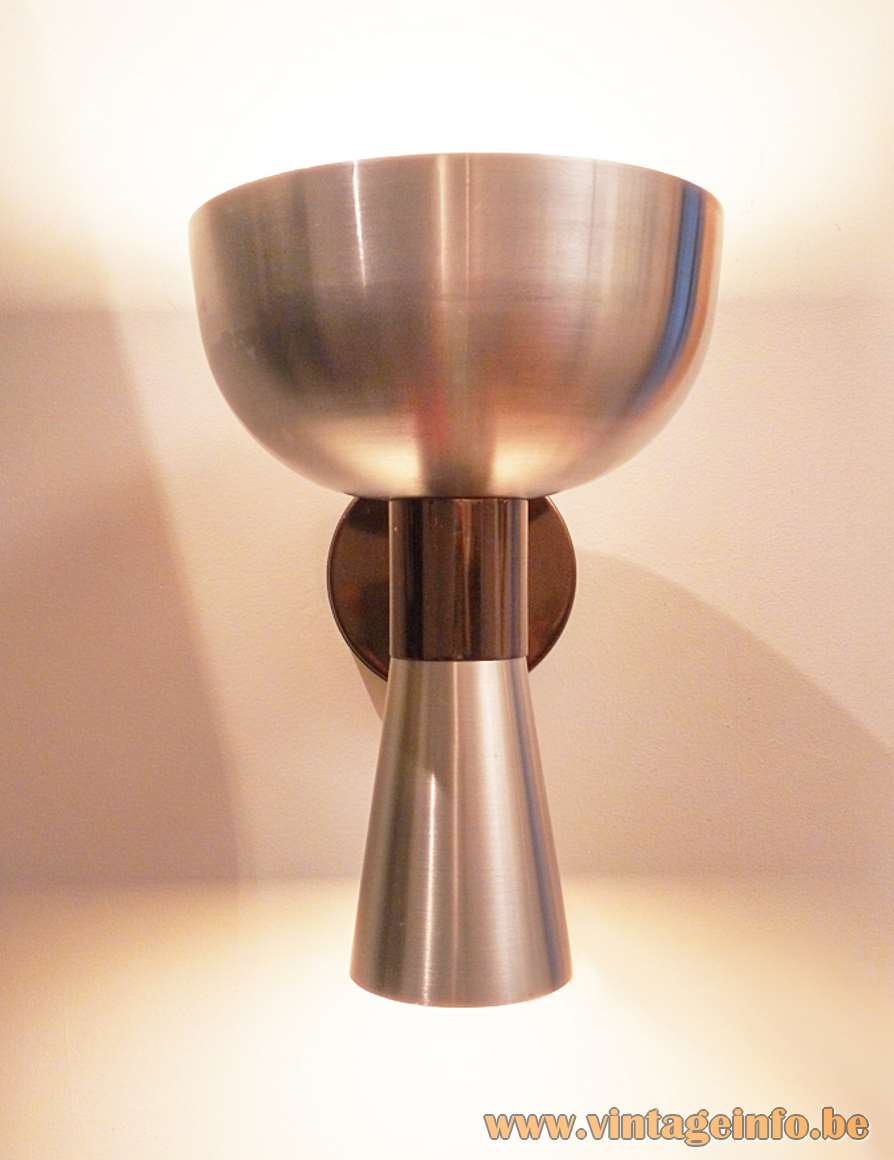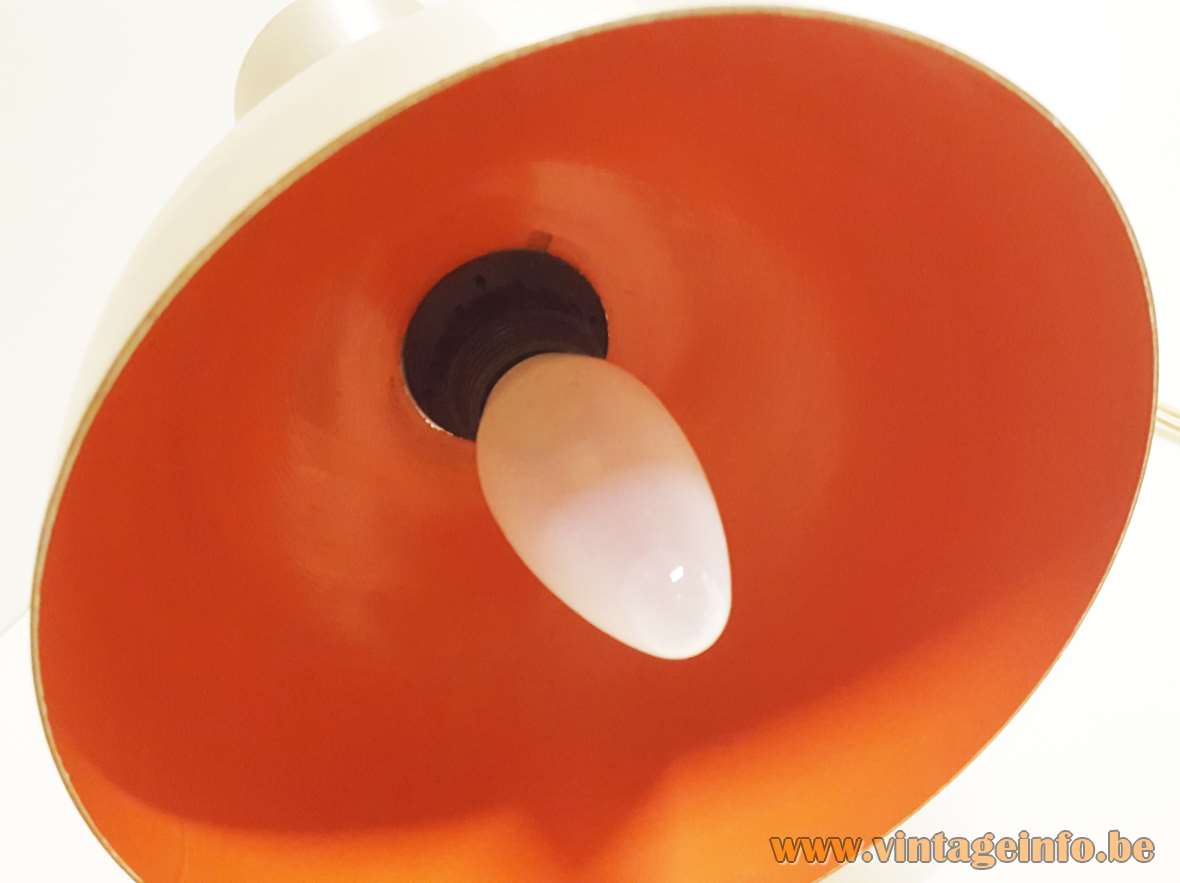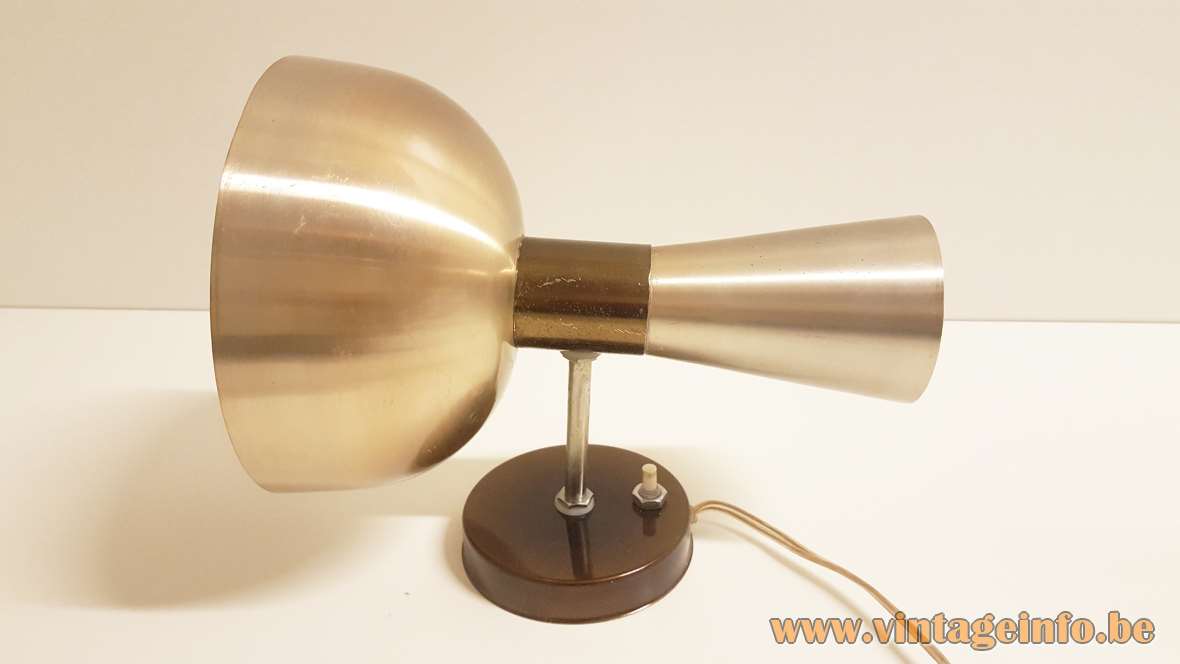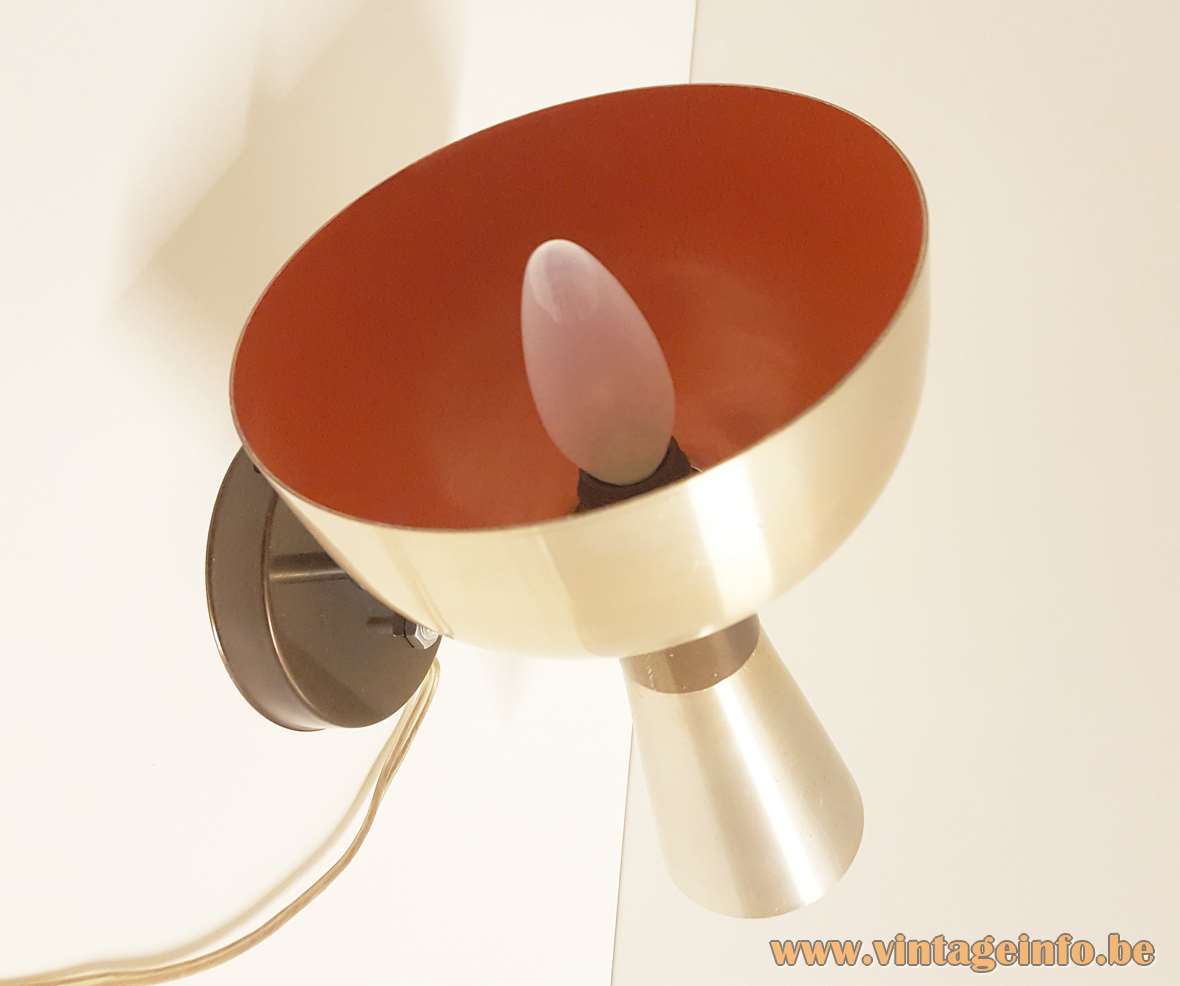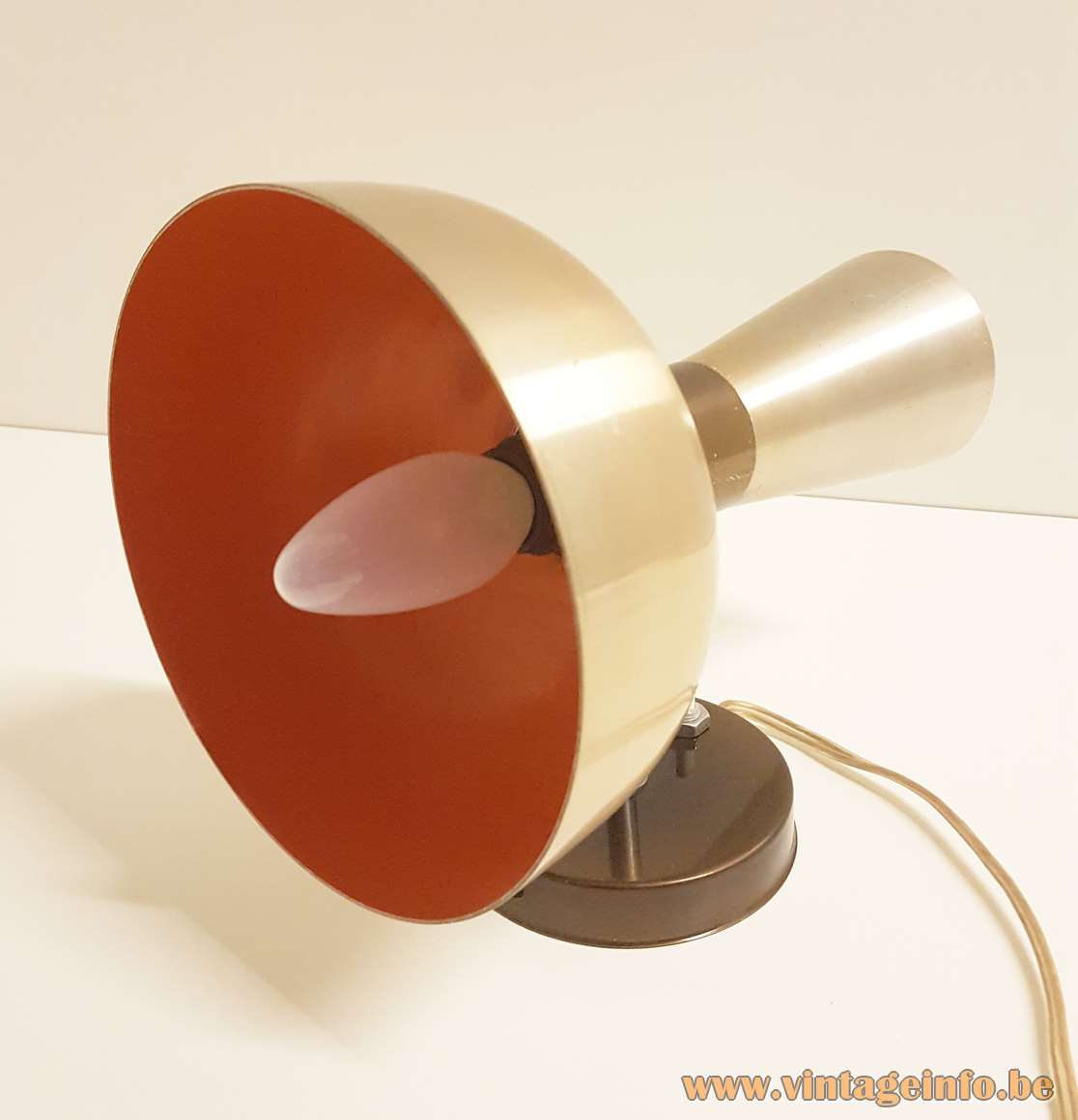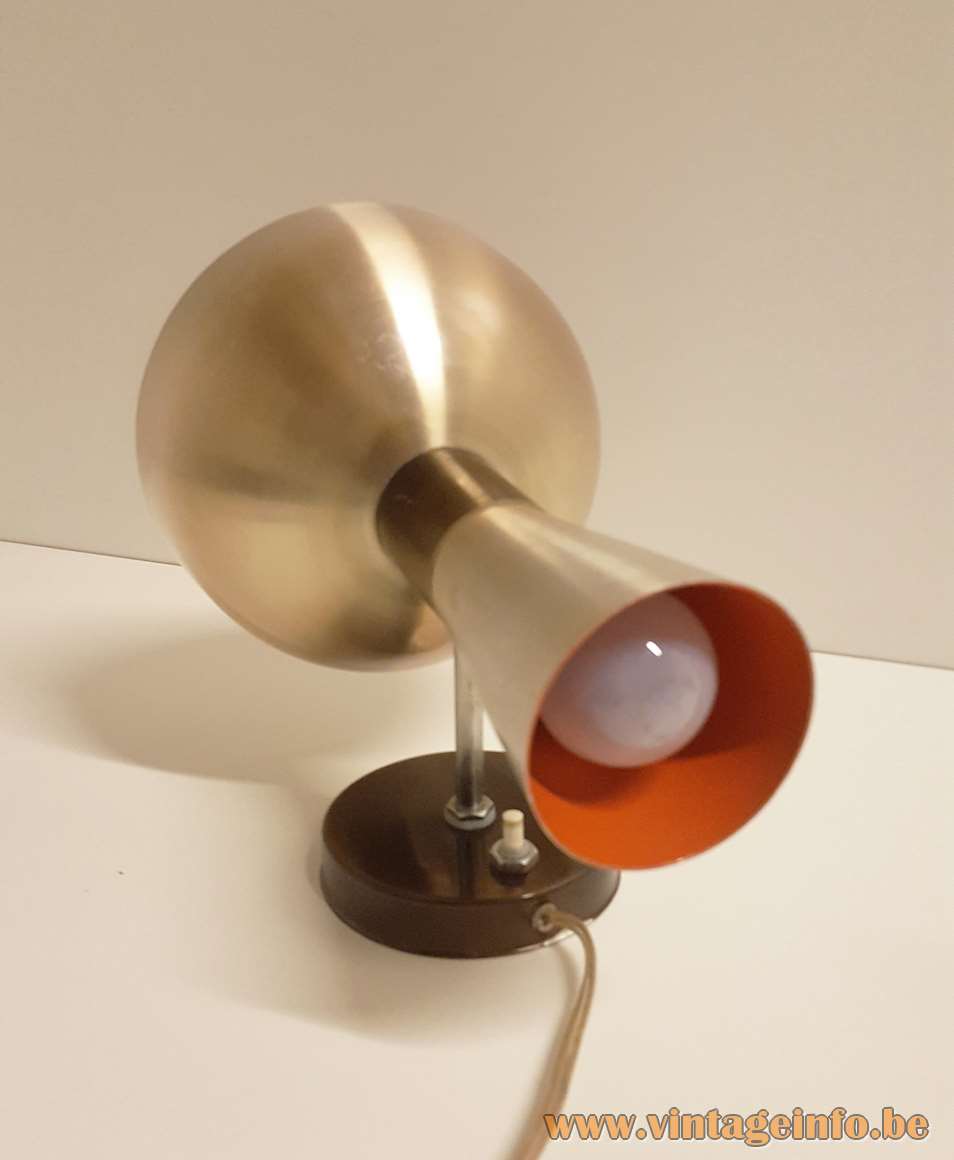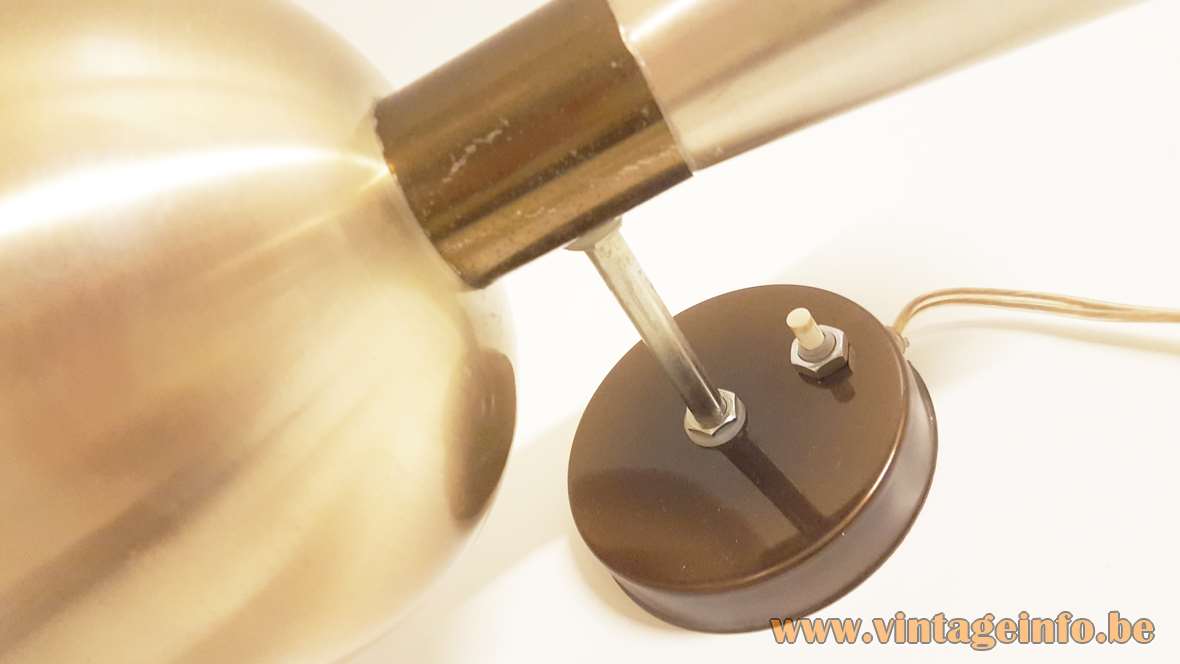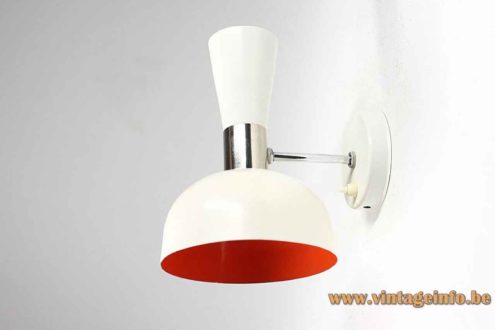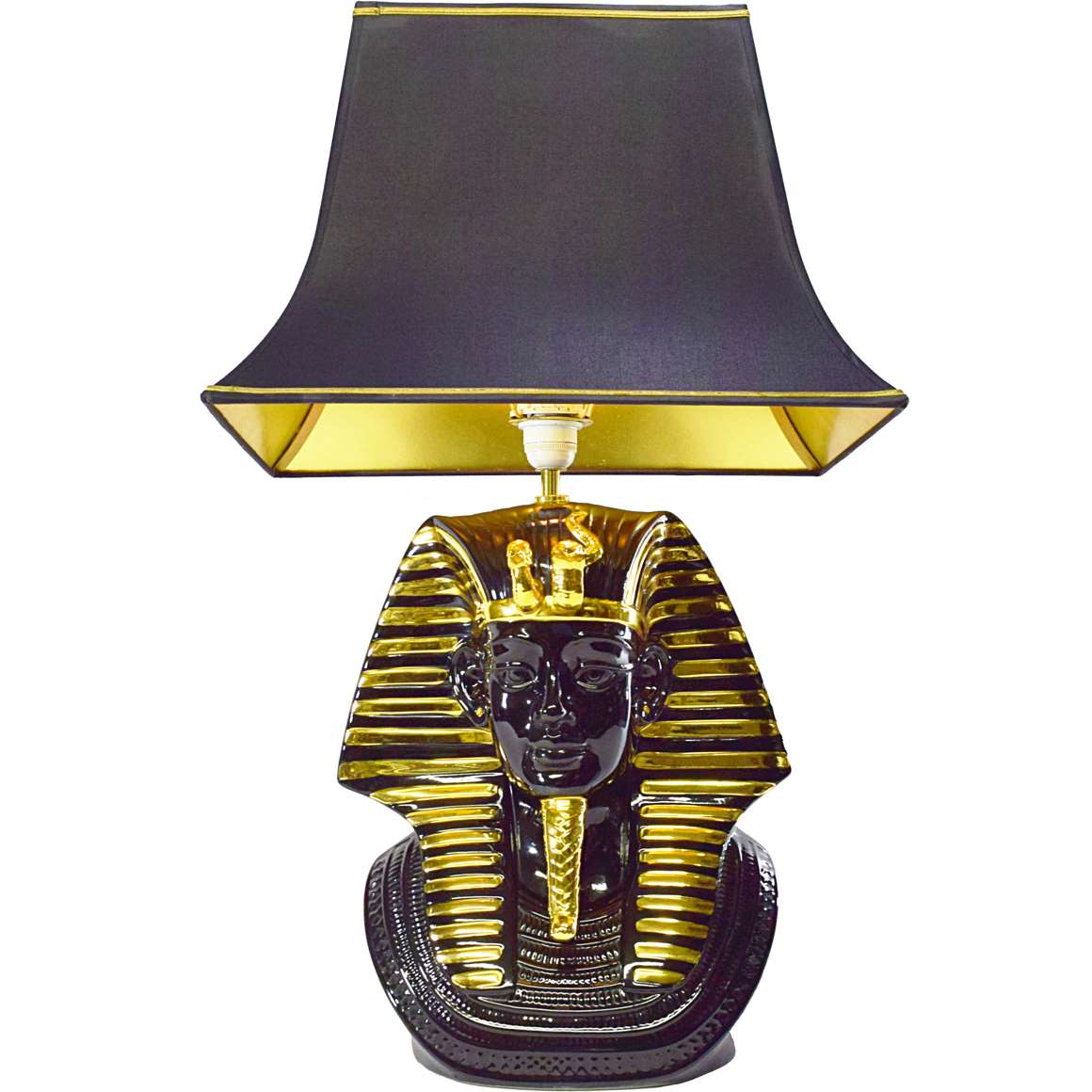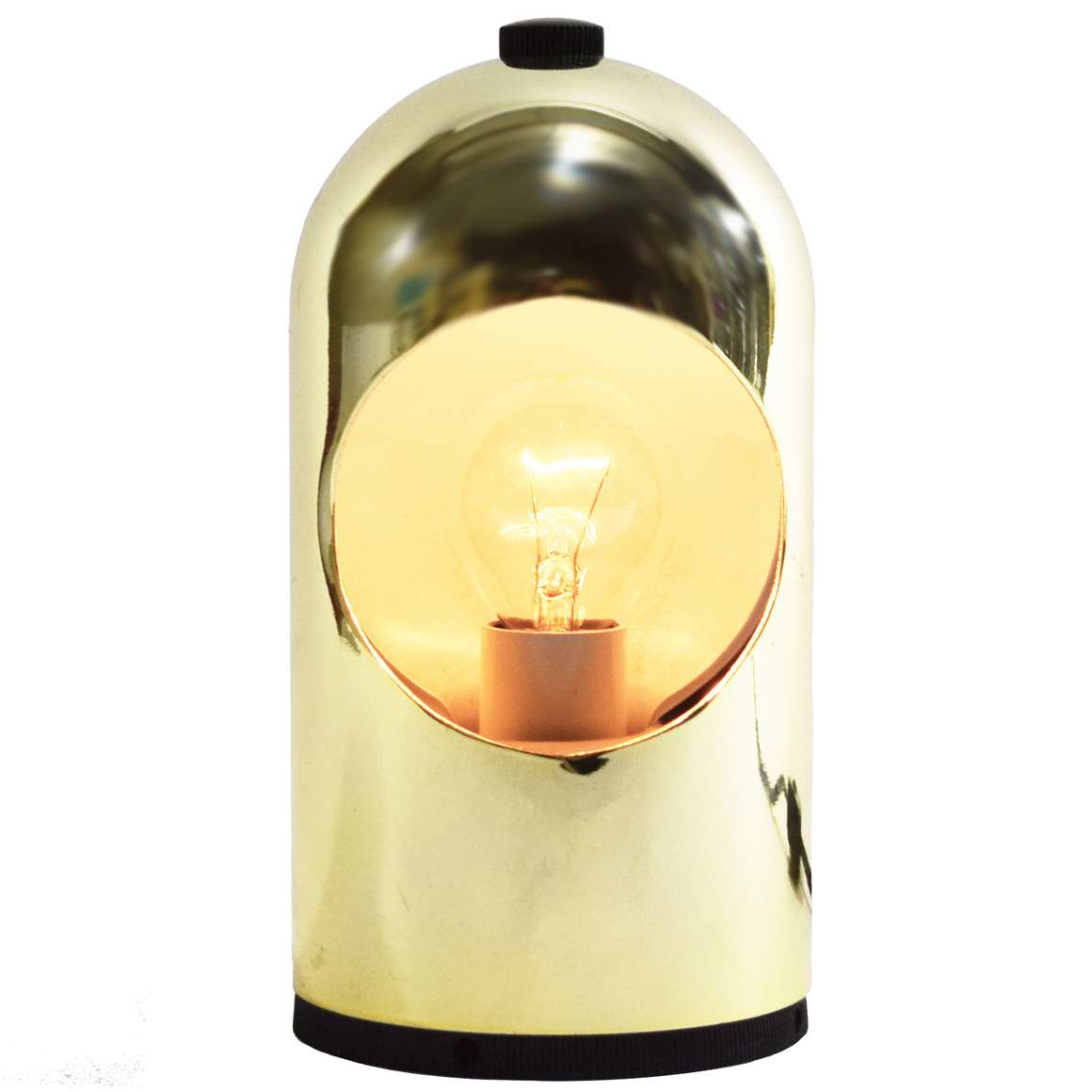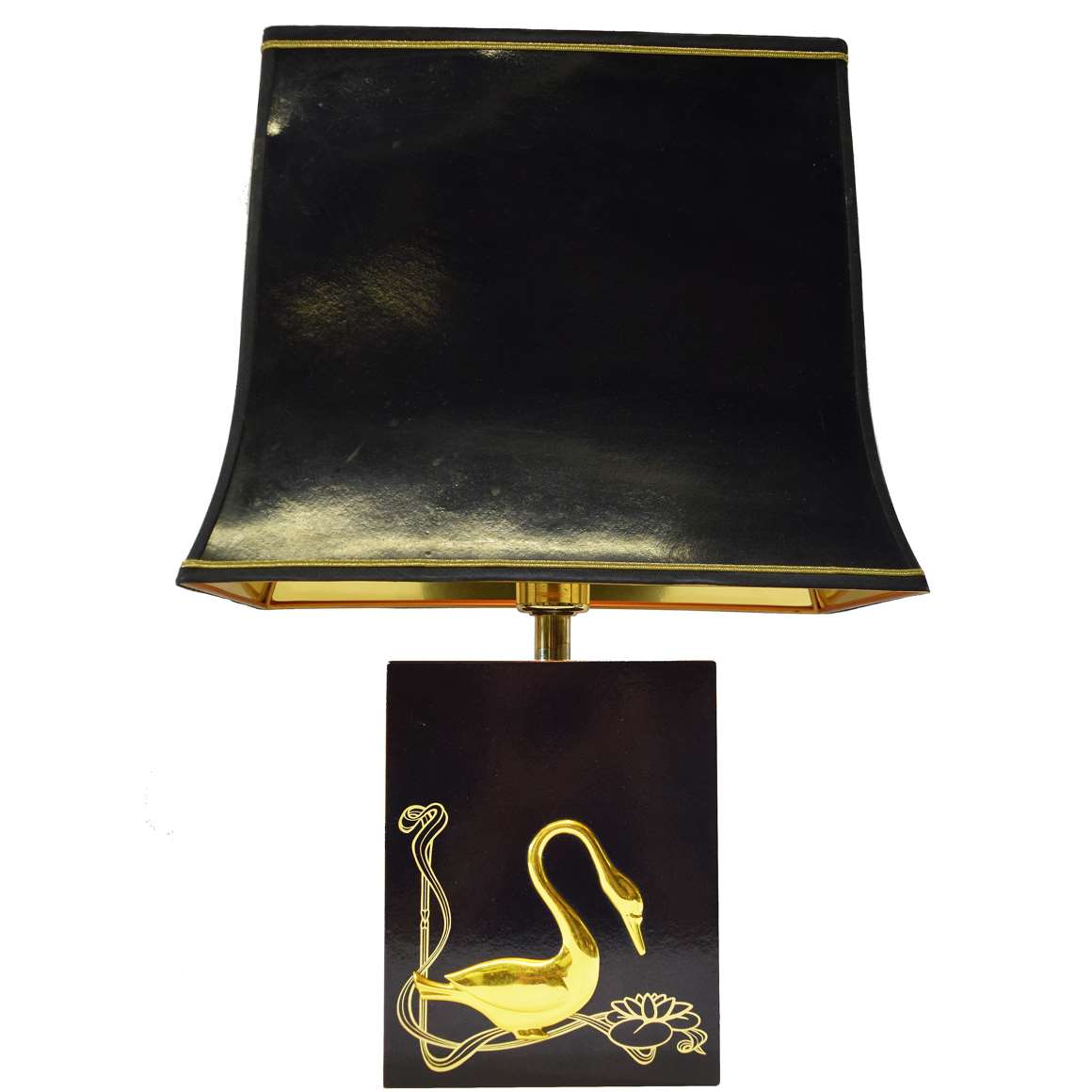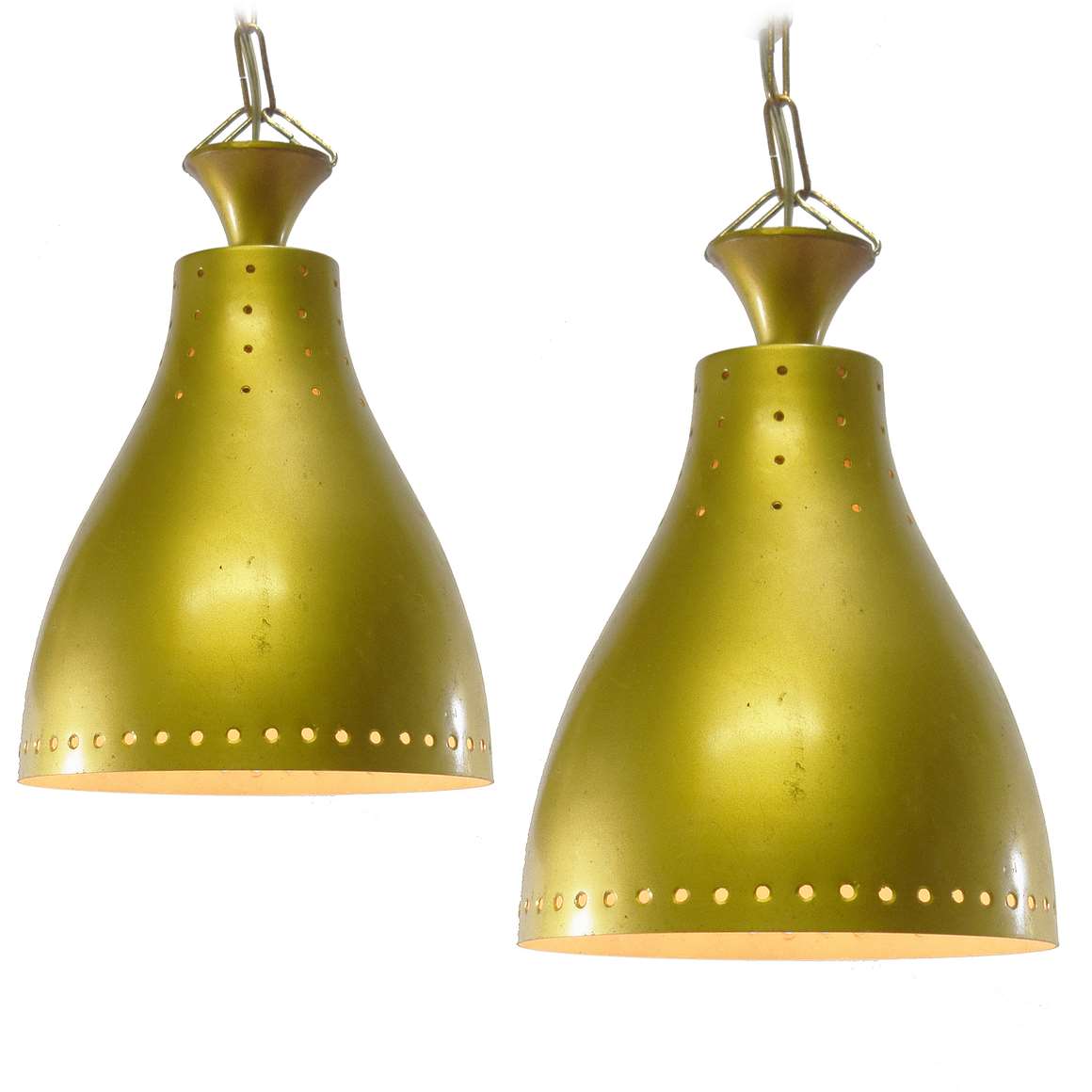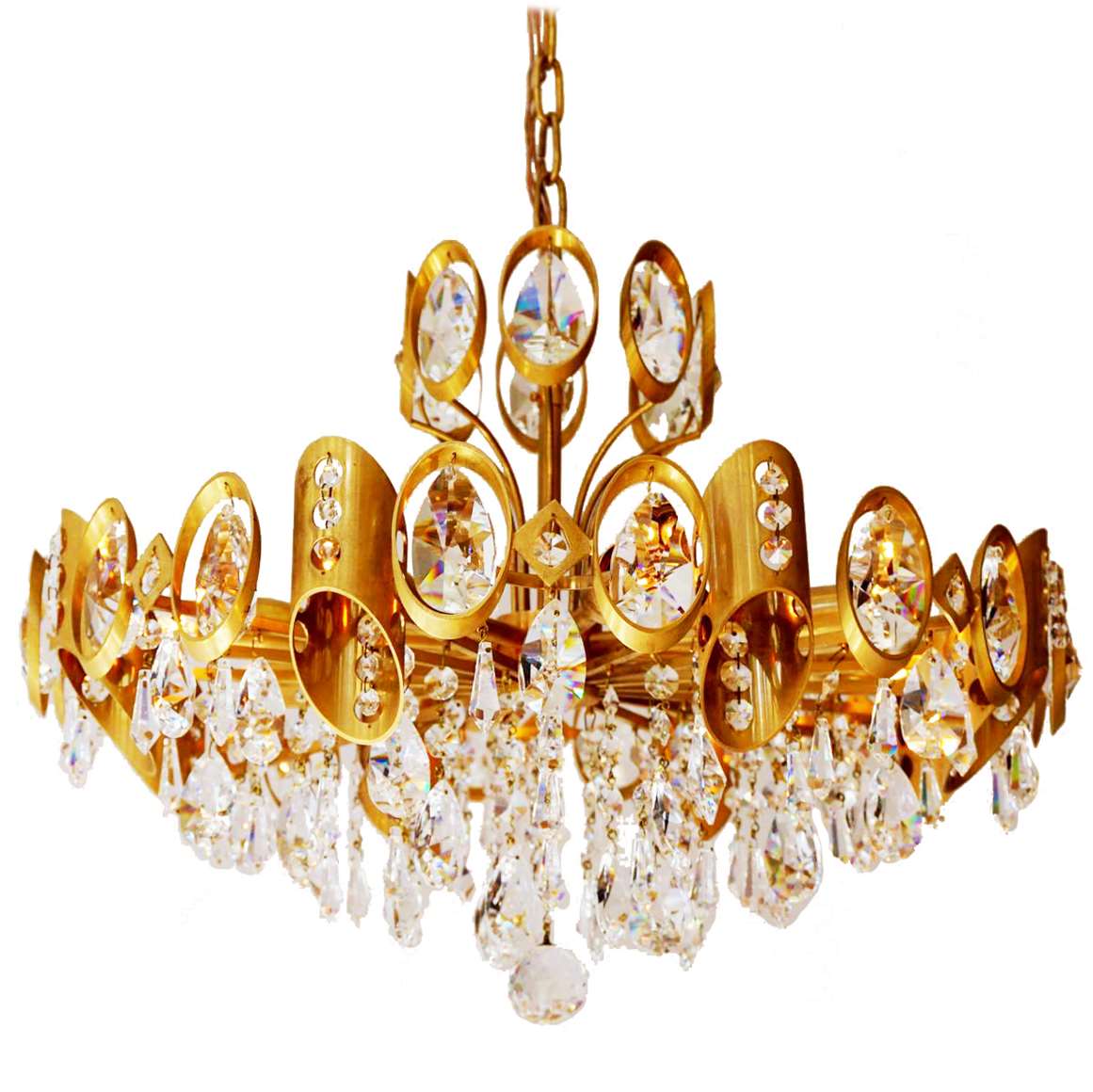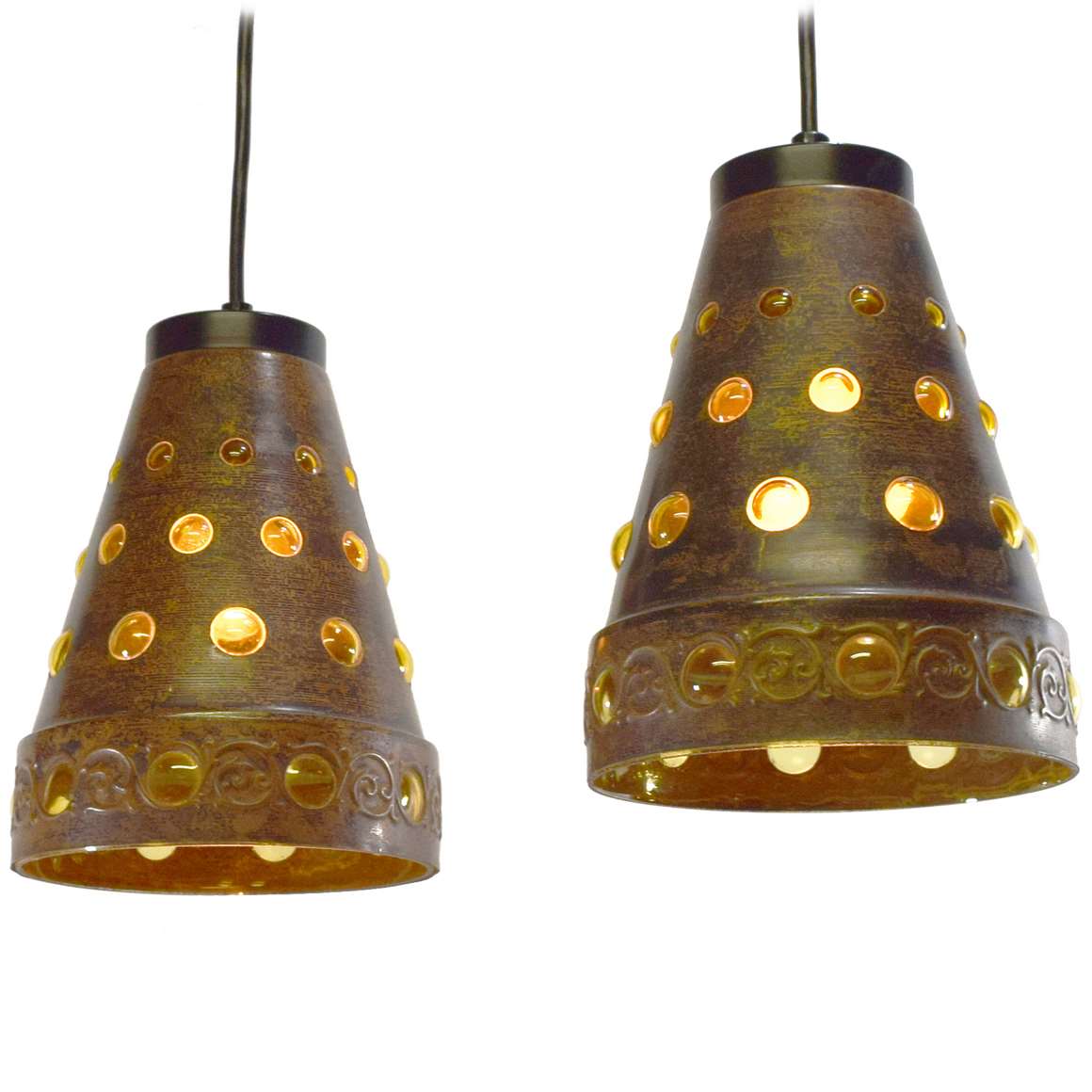Herda Diabolo Wall Lamp
Materials: Anodised gold coloured aluminium lampshade, painted orange inside. Round aluminium wall mount with switch. Some metal parts. Bakelite E14 sockets.
Height: 42 cm / 16.53”
Lampshades: ∅ 16,5 and ∅ 7,5 cm / 6.49” and 2.95”
Electricity: 2 bulbsE14, 2 x 40 watt maximum, 110/220 volt.
Anytypeof light bulb canbeused, not a specific one preferred.
Period: 1960s, 1970s – Mid-Century Modern.
Designer: To be appraised.
Manufacturer: Herda Verlichting BV, Amsterdam, The Netherlands.
Other versions: This Herda diabolo wall lamp exists in almost every colour.
Herda
Herda Verlichting BV (Herda Lighting company) was a owned by the Dutch “brothers Daniels” family and was located in Amsterdam, The Netherlands. Founded in 1946 by Henk en Rob Daniels. The name Herda is the abbreviation of the surname of Mr. Herwaarden and the surname of the Daniels brothers. Mr Herwaarden had arranged the permit (which was very difficult after the war). The company was declared bankrupt on June 24, 1997.
Herdahad sometop designersemployed, includingWillem van Oyen Sr. who is famous for the lamps he designed for the Raak Amsterdam company, also from The Netherlands.
Diabolo
Diabolo is the name given to the shape of the lampshade. The diabolo lampshades became very popular in the 1950s. You can find several examples on Vintageinfo.
The diabolo, some yo-yo, has its origin in China. It’s a double-coned bobbin that can be twirled, tossed, and caught on a string secured by two sticks, one held in each hand. The first diabolo’s were made of bamboo and they made some whistling sound.
In the eighteenth century, the diabolo became known in England and France. The term “diabolo” was made up by French engineer Gustave Phillippart, who developed the modern diabolo in the early twentieth century and he was re-released. Since then, he has been widespread.
Links (external links open in a new window)
Vintageinfo
Acrylic rise & fall pendant lamp
1980s post modernism desk lamp
Many thanks to Marjan from Vintage Drachten for the beautiful pictures.
Many thanks to Lluís from Eclectique Vintage for the photo of the white wall lamp.
